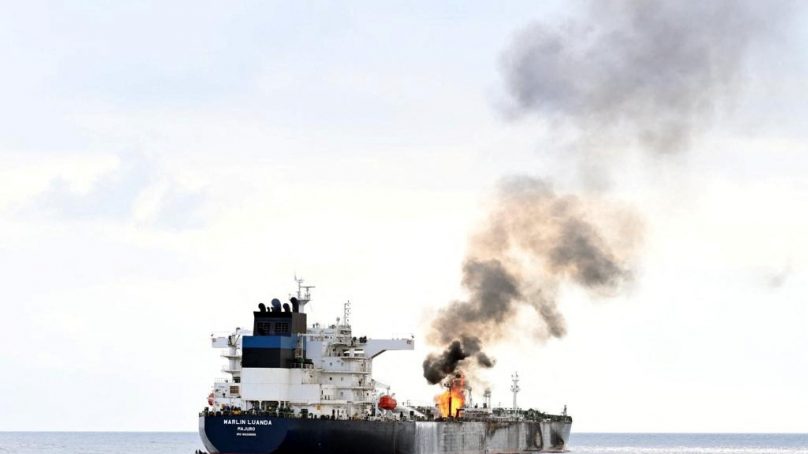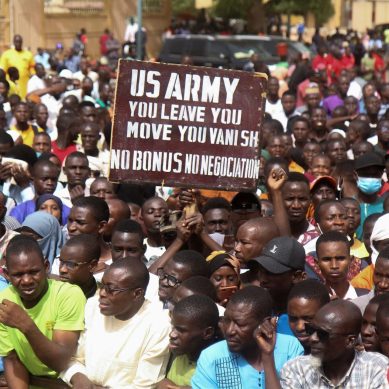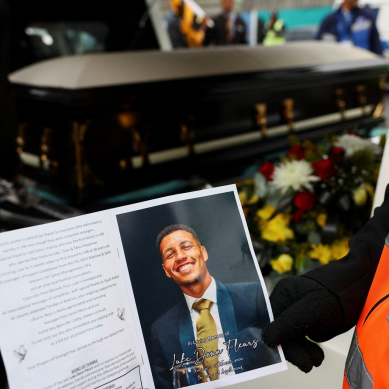
Iranian-backed Houthi militants, who control swathes of Yemen, have used an array of sophisticated weapons – including ballistic missiles and “kamikaze” drones – in their attacks on international shipping in the Red Sea in support of Palestinian militant group Hamas in its war with Israel in the Gaza Strip.
The attacks began on November 19 when Houthi commandos landed a helicopter on the Galaxy Leader cargo vessel as it was passing through the southern Red Sea. They redirected it toward Hodeidah Port in Yemen and seized the crew, who are still being held.
Since then, 29 more ships have been attacked in the area, with 13 of those suffering direct strikes from missiles or drones. The attacks have caused major disruptions to global trade, some 12 per cent of which passes through the Red Sea.
Reuters has catalogued the ships attacked so far and examined how Houthi militants are using a combination of weapons to target commercial ships. The analysis shows how Houthi drone and missile activity has escalated since the Gaza war began, and has continued despite Western military airstrikes on their bases in Yemen, which began on January 11.
Houthi attacks have targeted ships in the southern Red Sea and the neighbouring Gulf of Aden, which are joined by the Bab al-Mandab strait, a chokepoint between the Horn of Africa and the Middle East.
In Arabic, Bab al-Mandab means “Gate of Tears”, a reference to the strait’s precarious navigation. The narrow waterway lies between Djibouti and Eritrea on the coast of east Africa and western Yemen, much of which is under Houthi control.
Bab al-Mandab is a strategic link between the Mediterranean Sea and Indian Ocean: exports to the Western markets from the Gulf and Asia must pass through before entering the Suez Canal. At only 18 miles wide at its narrowest point, shipping traffic is limited to two channels for inbound and outbound shipments, leading to occasional congestion.
The Houthis, who control the most populous regions of Yemen, say they will continue their attacks until Israel halts its “siege” of Gaza. The Israeli government has pledged to continue its offensive in Gaza until it has secured the release of hostages seized in the October 7 attack on Israel by Hamas and destroyed the Palestinian militant group.
An analysis of reported incidents shows how Houthi drone and missile strikes have escalated since the Gaza conflict erupted and have continued since Western airstrikes began against land targets inside Yemen on January 11. In the past week, the pace of those airstrikes has slowed, while interceptions of missiles and drones by US and allied naval forces in the area has increased.
Fabian Hinz, open source analyst and research fellow at the International Institute for Strategic Studies (IISS), a military think-tank based in London, said it was unclear how far Western airstrikes had depleted the Houthis’ capabilities. “I would say in general it’s almost impossible to degrade an arsenal like that 100 per cent,” he said.
The Houthis have said the airstrikes have had no effect on their capabilities. A spokesman for the group did not respond to requests for comment for this story.
Israel, the U.S. and allies, have been shooting down Houthi missiles and drones since the conflict broke out in Gaza. Many targets were unknown or heading towards Israel but as time progressed, many were suspected to be targeting naval or commercial ships. Incidents on the chart may have involved multiple missiles or drones.
Attacks began to break through naval overwatch with some ships being struck directly with missiles or drones and others targeted but missed.
Many of the Houthi attacks have been on container vessels and dry bulk carriers. However, on January 26, the Marlin Luanda oil tanker – operated on behalf of international commodity trader Trafigura – was hit by a Houthi anti-ship missile in the Gulf of Aden, causing a fire that lasted several hours.
While no casualties were reported, the incident was the most destructive of the crisis so far, shipping and insurance sources said.
“The recent strike on the Marlin Luanda highlights the ongoing risk to vessels and the likelihood that the current crisis will impact shipping and commodity markets for the foreseeable future,” data and analytics group Kpler said in a Jan 30 report.
In a show of strength in September, the Houthis paraded thousands of troops and trucks carrying weaponry in the capital Sanaa, including cruise and ballistic missiles as well as long-range armed drones. Armoured vehicles and speed boats displayed signs that read: “Death to America, death to Israel!”
The Houthis, who emerged in the 1990s as an armed group in opposition to Saudi Arabia’s religious influence in Yemen, have long received funds, arms and training from Iran, according to regional and military experts.
Despite voicing support for the Houthi campaign, Iran has denied it provides the Yemeni group with weapons and intelligence. The Houthis have insisted they manufacture their own weapons and do not receive arms or take orders from Iran, even if they maintain a close relationship.
September’s military parade showcased Iranian-made weapons, including a surface-to-surface Iranian Toofan missile, which has a range of 850 to 1,200 miles (1,350-1,950km), making it capable of reaching Israeli territory, according to a report from the Meir Amit Intelligence and Terrorism Information Centre (ITIC), an Israel-based think-tank that researches Islamist groups and militias.
A view shows a military parade held by the Houthis to mark the anniversary of their takeover in Sanaa, Yemen September 21, 2023.
The parade also featured new shore-to-sea missiles capable of hitting vessels in the Red Sea, among them Tankil missiles, which have an estimated range of about 300 miles (500 km), and Quds Z-0s, which are cruise missiles capable of hitting targets both on land and at sea, ITIC said.
When the Houthis seized Sanaa in 2014, ousting the Saudi-backed government, they also inherited military equipment and staff with know-how from the previous government, notably short-range ballistic missiles as well as surface-to-surface and cruise missiles, some deployed on patrol craft, according to a specialist with Universal Defence and Security Solutions, a UK-based consultancy.
Their new Iranian-made weapons include Qasef-1 and Qasef-2K reconnaissance and attack drones, said the specialist, who declined to be named due to the sensitivity of the issue. While cheap and basic, these drones have a 50-60 mile range with a small warhead of around 30-40 kgs.
Other drones included the Sammad 1, 2 and 3, which are similar to the Qasef with a longer range of around 300 miles and smaller 18 kg warheads, he said.
The defence specialist said that supplies of weapons systems and parts from Iran meant the Houthis should be able to sustain the near-daily rate of attacks in the Red Sea. In addition, the Houthis were able to produce some of their own munitions for basic rockets and drones, he said.
“It’s not particularly important that many of the fired weapon systems do not cause any significant damage: the disruptive impact on maritime trade, which relies on insurance, is quite easy to maintain, causing significant financial impact and operational complexity,” he said.
The Pentagon and the British Department of Defence did not immediately respond to requests for comment.
Western military and shipping companies have shared little information publicly on the types of drones used in recent Red Sea shipping attacks.
- A Reuters report











